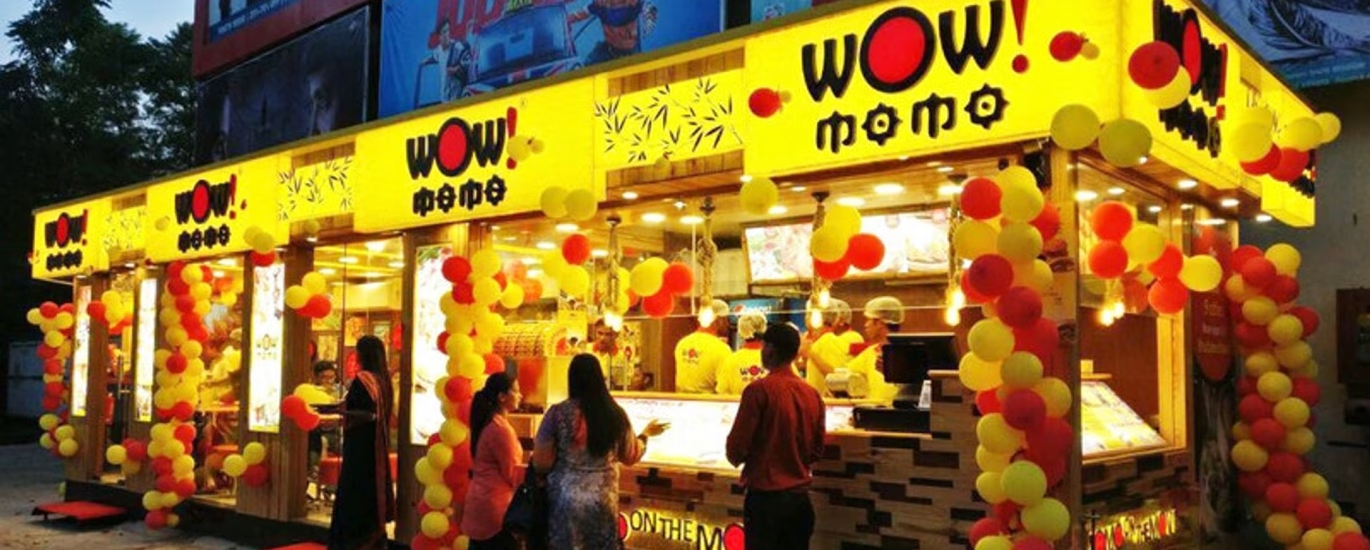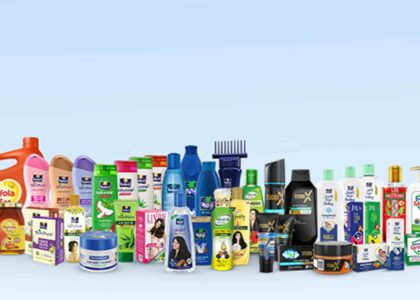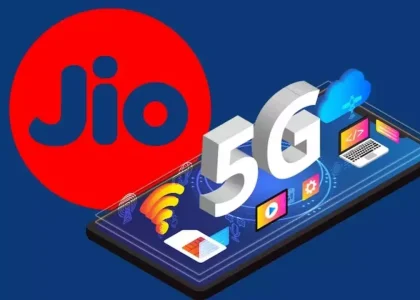Introduction
Wow! Momo, India’s pioneering home-grown quick service restaurant (QSR) brand, has created a category of its own with Tibetan momo-based innovations like momo burgers, chocolate momos, and sizzler momos. Launched in 2008, Wow! Momo today operates over 600+ outlets across India and has expanded into sister brands like Wow! China and Wow! Chicken.
But beyond its menu creativity, a key driver of its operational efficiency and profitability lies in its Kitchen + Outlet Hybrid Model—a unique format where production (kitchen) and service (outlet) are co-located to maximize space, cost, logistics, and manpower productivity.
This case study explores how Wow! Momo’s hybrid model optimizes operations through spatial efficiency, cross-trained staff, data-led kitchen deployment, and hub-spoke fulfillment for online orders, making it a scalable model for QSR growth in India’s cost-conscious environment.
The Indian QSR Landscape and Wow! Momo’s Positioning
A. QSR Growth in India
- The Indian QSR segment is valued at ₹45,000+ crore (~US$5.5 billion) (2024) and is growing at ~23% CAGR.
- Major players: McDonald’s, Domino’s, KFC, Subway, and local chains like Faasos, Biryani Blues.
- Post-COVID, demand shifted toward:
- Contactless takeaway
- Efficient deliveries
- Compact stores with production visibility
B. Wow! Momo’s Business Model
- Focused on Tier 1 and Tier 2 urban consumption
- Product pricing: ₹60–₹180 range
- Hybrid dine-in + delivery + takeaway format
- Operates via:
- Company-owned outlets
- Cloud kitchens
- Franchise stores
By 2024, Wow! Momo operates across 100+ cities, clocking revenues north of ₹300 crore and aiming for IPO readiness by 2026.
Kitchen + Outlet Hybrid Model – Concept and Need
A. What is the Hybrid Model?
In contrast to the traditional QSR model where the kitchen is centralized or located at the back of the store, Wow! Momo’s Kitchen + Outlet Hybrid Model involves:
- Shared kitchen and counter space
- Open kitchen formats in malls, metros, tech parks
- In select zones: cloud kitchen + customer window + delivery integration
B. Strategic Reasons
| Factor | Why Hybrid Works |
| Real estate cost | Reduces rent per sq. ft. by combining production + sale |
| Speed of service | Cuts prep-to-plate time to <6 minutes |
| Inventory efficiency | Raw materials stored and used onsite |
| Manpower flexibility | Cooks double up as servers during lean hours |
| Delivery integration | No need for third-party kitchens or hubs |
Execution Framework of the Hybrid Model
Wow! Momo executes this hybrid format using a 4-layered SOP approach:
A. Location & Format Strategy
- Target real estate formats:
- High-footfall food courts (malls, stations, airports)
- Commercial tech parks (Infosys campuses, SEZ zones)
- High street standalone outlets (150–300 sq. ft.)
- Zoning blueprint:
- 60% allocated to open prep kitchen
- 30% for POS and customer interface
- 10% for inventory and delivery aggregator interface
Outcome: Outlets operate at 30–40% lower cost per sq. ft. than peer brands.
B. Staffing & Cross-Training SOP
| Role | Hybrid SOP |
| Chef (Line Cook) | Trained to handle POS system and customer queries |
| Delivery Coordinator | Packs orders, handles Swiggy/Zomato runners |
| Supervisor | Manages both food safety and cash handling |
- Shift-based roster management (store managers use mobile dashboard)
- Training via Wow! Academy, with modules on:
- Hygiene
- Front desk etiquette
- Delivery SLAs
- Kitchen SOPs
Result: One outlet runs efficiently with 4–6 staff instead of 8–10.
C. Inventory & Procurement
- Daily raw material usage logged via POS-linked kitchen screen
- Inventory inputs push reorder notifications to central warehouse
- Each outlet has:
- 2–3 days’ buffer of dumpling sheets, fillings, sauces
- Cold storage units and prep-freeze zones
- Uses predictive reordering algorithm based on:
- Hourly order trends
- Past 7-day rolling average
- Promotions (BOGO, festive combos)
Shrinkage reduced by 20–25% due to hyper-local inventory ownership.
D. Multi-Channel Fulfillment (Dine-in + Delivery)
Wow! Momo’s hybrid model supports simultaneous handling of:
| Mode | SOP Highlights |
| Dine-in | Open kitchen prep in <6 min, handheld ordering pads |
| Takeaway | Digital Kiosk + app-based order pickup screen |
| Delivery (Swiggy/Zomato) | Integrated API to manage order batching and rider wait time |
- Kitchen prioritizes orders based on timestamp and prep time.
- Average delivery order handling time: <8.5 minutes
Operational Metrics Improved by the Hybrid Model
| Metric | Pre-Hybrid | Post-Hybrid |
| Real Estate Cost / Outlet | ₹90–₹100/sq. ft. | ₹55–₹65/sq. ft. |
| Staff per Outlet | 9.2 | 5.4 |
| Avg. Ticket Time | 9.5 minutes | 5.8 minutes |
| Inventory Wastage | 18% | 9% |
| Outlet Break-Even | 16 months | 9–11 months |
Integration with Wow! Cloud Kitchen & Online Ordering
The hybrid kitchen format also powers:
- Wow! Cloud Kitchen vertical (100+ dark kitchens)
- D2C ordering via Wow! Momo app + third-party apps
- Aggregator API integrations:
- Live order feed
- Prep time sync
- Automated delay notifications
Hybrid outlets act as hubs for:
- Local deliveries
- Menu trials
- On-ground brand activations (e.g., “Momo of the Month”)
Role in Menu Innovation and Consumer Testing
- New SKUs (Wow! Darjeeling Momo, Chocolate Bao, etc.) launched first at hybrid stores
- Live feedback via POS comment fields
- Kitchen team trained to gather customer reactions
Feedback loop:
POS + Delivery Reviews → Innovation Lab → SOP Update + Training Push → Hybrid Outlet Rollout
This agile innovation pipeline shortens product test cycles from 60 to 15 days.
Expansion Strategy Using Hybrid Model
Target Zones
- Metro stations (Bengaluru Metro, Kolkata Metro)
- Food courts in office parks (RMZ, Embassy)
- Tier-2 cities: Indore, Bhubaneswar, Coimbatore, Nashik
Franchise Hybrid SOP
- Franchisees use same hybrid layout, staffing ratio, and dashboard tools
- Wow! Central team controls:
- Raw material supply
- Training & SOP audit
- Marketing collateral
80% of new franchises post-2023 follow hybrid model
Challenges & Solutions
| Challenge | Solution |
| Heat & congestion in compact kitchens | Open exhaust systems, modular cooking stations |
| Training new hires across multiple roles | “Buddy learning” + video-based microtraining |
| Delivery delays during peak hours | Kitchen management system (KMS) auto-adjusts priority |
| Brand image with low-footprint formats | Uniform design with premium signage, color-coded aprons |
Competitive Benchmarking
| Metric | Wow! Momo | Dominos | Faasos | McDonald’s |
| Outlet size | 150–300 sq. ft. | 800–1,200 sq. ft. | Cloud only | 1,500+ sq. ft. |
| Hybrid model | ✅ | ❌ | ✅ (limited) | ❌ |
| Staff per outlet | 4–6 | 12–14 | 6 | 15+ |
| Delivery integration | API + POS | Custom app | API + kitchen view | Own platform |
| Break-even TAT | 9–11 months | 15–18 months | 12 months | 18–24 months |
Vision 2025 – Scaling Hybrid to 1,000 Stores
Wow! Momo plans to scale to 1,000+ outlets by 2025. The hybrid model enables:
- Rapid rollout in high-rent markets
- Flexibility to shut or shift low-performing outlets
- Replication in Wow! China and Wow! Chicken formats
Planned innovations:
- AI-assisted scheduling for staff
- Real-time ingredient depletion alerts
- QR code-based reordering for dine-in
Conclusion
Wow! Momo’s Kitchen + Outlet Hybrid Model is a textbook example of operational efficiency fused with experiential dining. By combining production and service in a compact, tech-integrated format, it has built a QSR model optimized for the Indian urban consumer, aggregator economy, and real estate constraints.
This hybrid approach has enabled Wow! Momo to:
- Lower fixed costs
- Improve speed of service
- Enhance menu responsiveness
- Scale profitably into Tier-2 cities and micro-markets
As Indian QSRs face rising input costs and fierce competition, Wow! Momo’s hybrid strategy offers a sustainable, intelligent pathway for expansion.
Key Takeaways
- A Kitchen + Outlet hybrid optimizes space, cost, and manpower in one stroke
- Cross-training and automation are key to managing lean outlet teams
- Real-time inventory + delivery management is essential for QSR agility
- Hybrid formats shorten time-to-market for menu innovations
- Franchise scalability is enhanced by standardizing the hybrid playbook
Sources
- Wow! Momo Investor Decks (2022–2024)
- Interviews with Sagar Daryani (Co-founder) – CNBC, YourStory, ET Retail
- Franchise India Retail & QSR Reports
- Technopak QSR Intelligence Report 2023
- Swiggy & Zomato aggregator APIs
- RedSeer Analysis on QSR Growth in India (2024)






